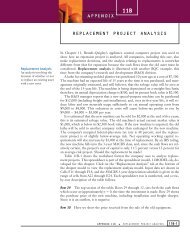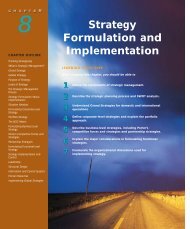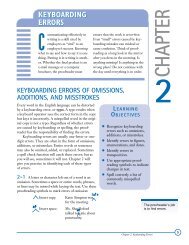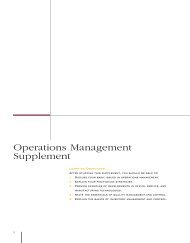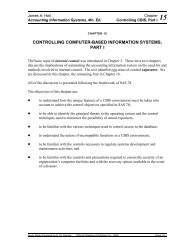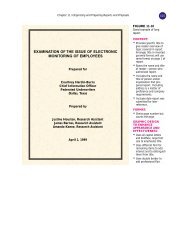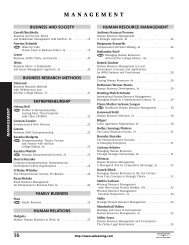The Keynesian Cross
The Keynesian Cross
The Keynesian Cross
You also want an ePaper? Increase the reach of your titles
YUMPU automatically turns print PDFs into web optimized ePapers that Google loves.
<strong>The</strong> <strong>Keynesian</strong> <strong>Cross</strong> 6<br />
of output was reached. Using the inventory adjustment process, inventories would be bulging<br />
from shelves and warehouses and rational firms would reduce output and production until inventory<br />
stocks return to the desired level. <strong>The</strong>re is more discussion of this inventory adjustment<br />
process later in the chapter when the complete model has been developed.<br />
This basic model, in which we’ve assumed that consumption spending is the only component<br />
of aggregate expenditure (that is, we’ve ignored investment, government spending, and net<br />
exports) and in which we’ve assumed that some consumption spending is autonomous, is quite<br />
simple, yet this is the essence of the <strong>Keynesian</strong>-cross model. From Figure 3, you can see where<br />
the “cross” part of its name comes from. Equilibrium in this model, and in more complicated versions<br />
of the model, always occurs where one line representing aggregate expenditure crosses<br />
another line representing the equilibrium condition where aggregate expenditure equals output<br />
(the 45-degree line). <strong>The</strong> “<strong>Keynesian</strong>” part of the name reflects the fact that the model is a simple<br />
version of John Maynard Keynes’s description of the economy from 60 years ago.<br />
Now let’s put Figures 2 and 3 together to find the equilibrium in the economy, shown in<br />
Figure 4. As you might guess, the point where the two lines cross is the equilibrium point. Why?<br />
Because it is only at this point that aggregate expenditure is equal to output. Aggregate expenditure<br />
is shown by the flatter line (labeled “Aggregate expenditure = Consumption”). <strong>The</strong> equilibrium<br />
condition is shown by the 45-degree line (labeled “Output = Aggregate expenditure”). <strong>The</strong><br />
only point for which consumption spending equals aggregate expenditure equals output is the<br />
point where those two lines intersect, which is labeled “Equilibrium output” on the horizontal axis<br />
and “Equilibrium aggregate expenditure” on the vertical axis. Because these points are on the 45degree<br />
line, equilibrium output equals equilibrium aggregate expenditure.<br />
Not only can we find the equilibrium point graphically, but since we have an equation that<br />
describes the aggregate-expenditure line (remember it equals consumption, which in turn equals<br />
$1 trillion plus 75 percent of output), we can use some algebra to find the dollar value of equilibrium<br />
output. Let Y represent the amount of output. <strong>The</strong> intersection of the two lines in the figure<br />
means that aggregate expenditure, $1 trillion + (0.75 Y), equals output, Y. So we have $1<br />
trillion + (0.75 Y) = Y. Subtracting 0.75 Y from both sides of the equation yields $1 trillion<br />
= .25Y and then multiplying each side of the equation by 4 yields Y = $4 trillion.<br />
Adding Investment, Government Purchases, and Net Exports<br />
Now we can complicate our model in another important way, adding in the other three major components<br />
of expenditure in the economy—investment, government purchases, and net exports. As<br />
a first step, we’ll add these components to the model but assume that they are autonomous, that<br />
is, they don’t depend on the level of income or output in the economy. Later, we’ll relax that<br />
assumption.<br />
Suppose that consumption depends on the level of income or output in the economy, but<br />
investment, government purchases, and net exports don’t; instead, they depend on other things in<br />
the economy like interest rates, political considerations, or the condition of foreign economies<br />
(we’ll discuss these things in more detail later). Now, aggregate expenditure (AE) consists of consumption<br />
(C) plus investment (I) plus government purchases (G) plus net exports (NX):<br />
AE C + I + G + NX.<br />
This equation is nothing more than a definition (indicated by the rather than =): aggregate<br />
expenditure equals the sum of its components.<br />
When we add up all the components of aggregate expenditure, we’ll get an upward sloping<br />
line, as we did in Figure 4, because consumption increases as income increases. But since we’re



